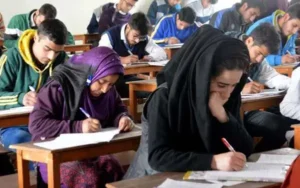15 ancient idols discovered during spring renovation in Kashmir

In a significant archaeological discovery, three Muslim labourers unearthed ancient idols, including 11 Shivlings, during the renovation of a spring at Karkoot Nag in the Salia area of Anantnag district’s Aishmuqam.
The discovery was made on Saturday morning when Riyaz Ahmad Khan, Adil Aziz Batana, and Bashir Ahmad Binth were clearing a section of the spring, locals told
As the water level had receded in recent months, the workers uncovered a small compartment-like stone structure inside the spring, where the idols had apparently been placed and preserved underwater.
The labourers promptly informed Satroo Ji, president of the Saluya Panchalpora Nagbal committee, who advised them to safeguard the idols.
“We could have hidden them, but we didn’t. We knew it was something sacred,” one of the labourers told The Kashmiriyat. “Since that day, we’ve been guarding the idols in shifts, even through the night.”
The site, known locally as Karkoot Nag, is of particular significance to Kashmiri Pandits, many of whom link it to the Karkota (Karkuta) dynasty, which ruled Kashmir during the 7th to 9th centuries.
According to local accounts, this spring was among the first places where rulers of the dynasty prayed, and it remained a site of spiritual importance through successive generations.
Sunny Raina, a Kashmiri Pandit from the area, emphasized this link. “This is not just a spring, it’s part of our living history. The Karkota kings are believed to have performed their first rituals here. This discovery only reaffirms that connection.”
Officials from the Jammu & Kashmir Department of Archives, Archaeology and Museums have visited the site.
One official confirmed to The Kashmiriyat that the idols will be sent to Srinagar for material and dating testing to determine their age and origins.
The communal harmony shown by the local Muslim community, who not only protected but also respected the idols, has been widely lauded, offering a quiet but powerful reminder of Kashmir’s syncretic past.





